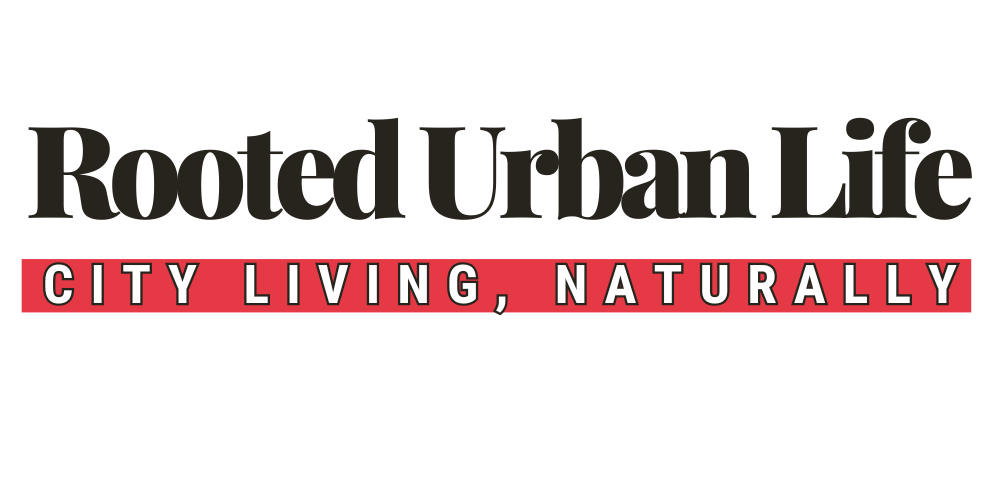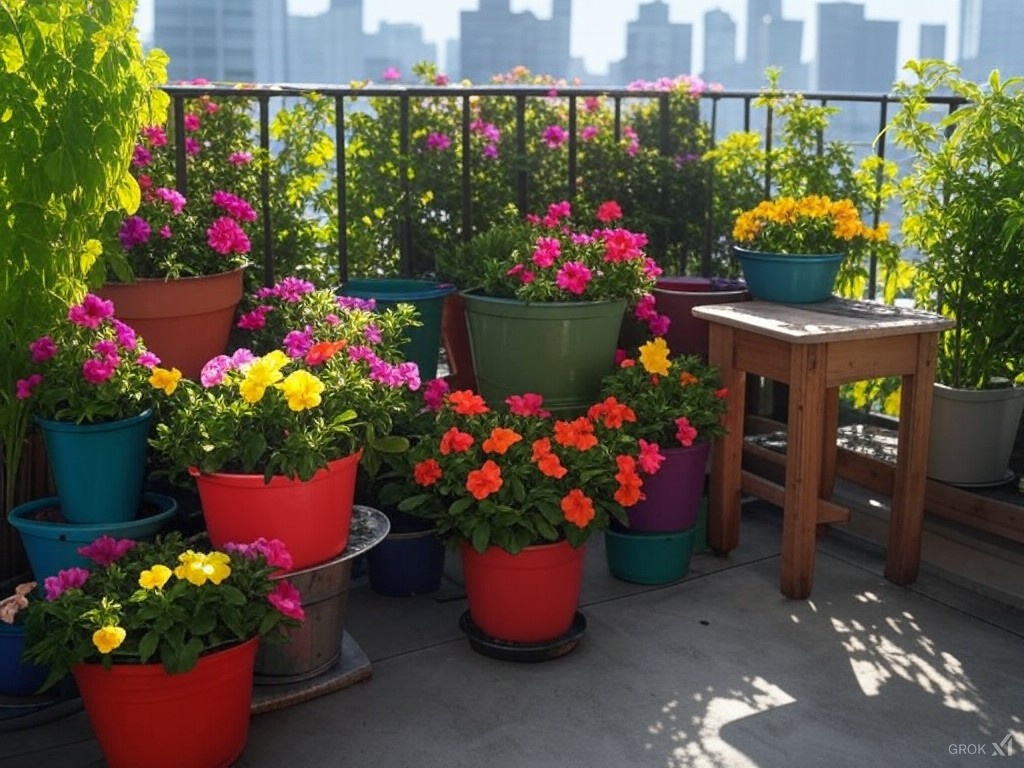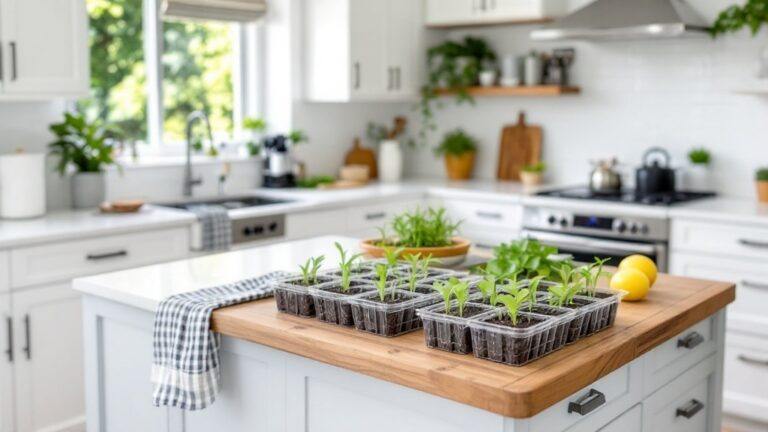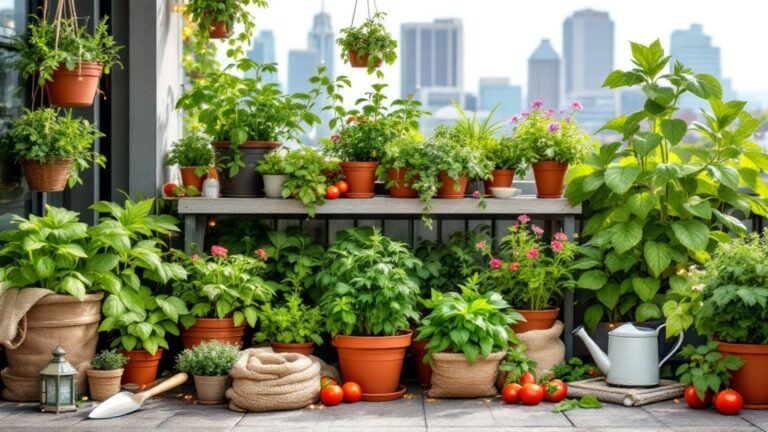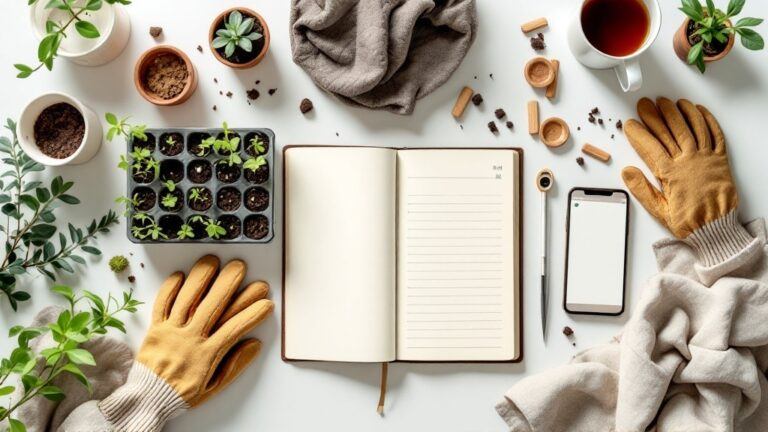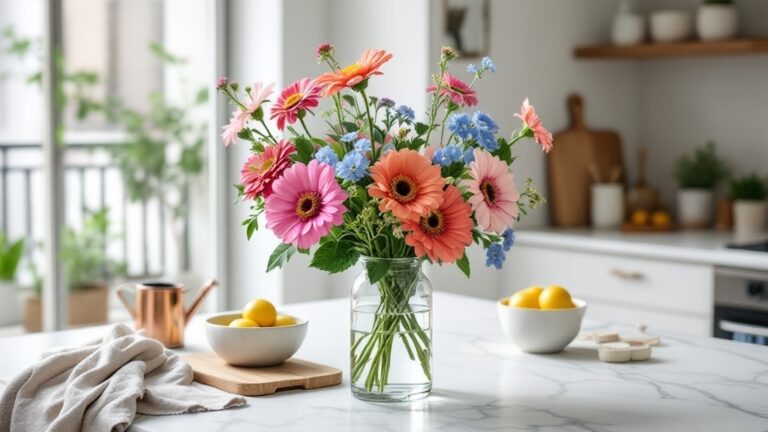Transform Your Balcony Into A Thriving Garden With The Perfect Pots
Learn How to Choose The Right Pots That Fit Your Plants and Your Lifestyle
The Problem
- Living in an urban environment or dealing with a small balcony often poses challenges to gardening enthusiasts. Choosing the wrong containers can lead to stunted plant growth, over-watering, or under-watering issues, turning your gardening hobby into a frustrating task.
- With limited space and varying conditions, it’s crucial to pick containers that not only look good but also support plant vitality.
What You Will Learn
- Our comprehensive guide walks you through every aspect of selecting the best containers for your balcony garden. We ensure your plants get the right environment to grow, thrive, and beautify your space all year round.
- Learn how to match container materials, sizes, and drainage to your plants’ needs, transforming your balcony into a vibrant, productive garden.
| – Choose the best containers for your balcony garden is essential for plant health and space efficiency. – Focus on selecting the right size and material to suit your plants’ needs, – Ensure proper drainage – Adapt your watering routine to your balcony’s conditions. |
Understanding Container Materials
The material of your container affects your plants’ health, growth, and maintenance. Here are some popular options:
- Terracotta: These pots are not just about aesthetics; they’re breathable, helping regulate soil temperature for healthier root systems. However, their porous nature means you’ll need to water more often during hot spells.
- Plastic: Lightweight and cost-effective, these pots are perfect for those who like to rearrange their garden. They keep soil moist longer but beware of overwatering due to their insulation properties.
- Ceramic: Ideal for those who want style without sacrificing functionality. Ceramic pots retain moisture well, adding a touch of elegance but remember, they can be heavy and sensitive to temperature changes.
- Wood: For an eco-conscious choice that adds a natural charm, wooden planters are great. They require some maintenance to prevent rot but offer a unique aesthetic and good insulation.
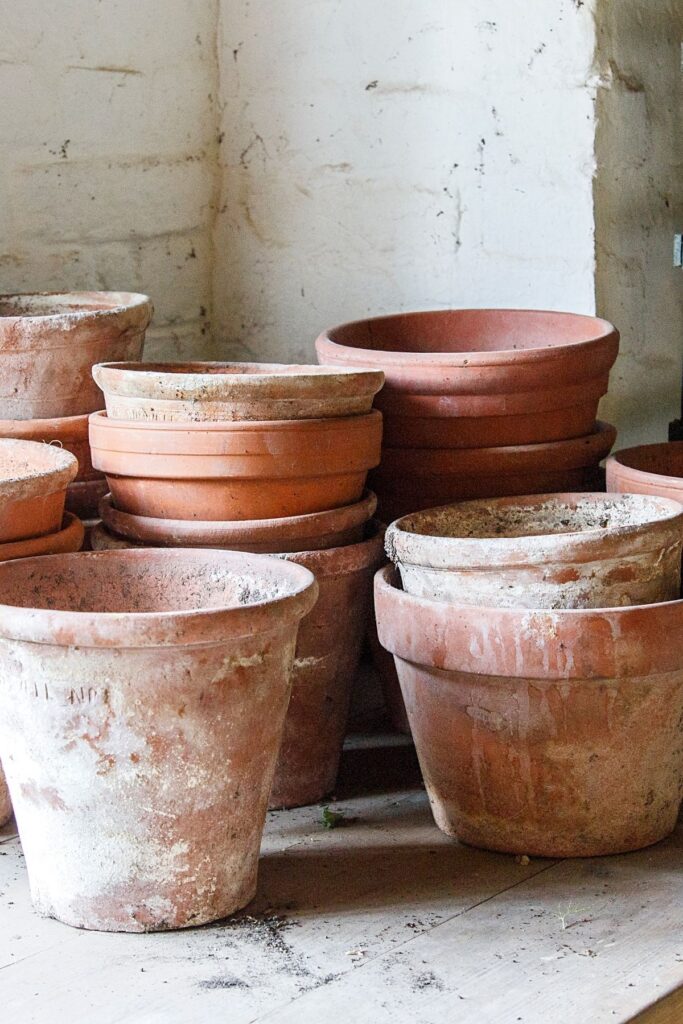
The Right Size and Drainage for Your Pots
When selecting containers, size and drainage are key to plant health:
- Size: Choose containers that fit your plant’s root system. Smaller containers dry out quickly, while larger containers retain more soil and moisture, making them ideal for bigger plants. For deep-rooted plants, opt for larger pots.
- Drainage: Always ensure your containers have drainage holes to prevent water pooling at the bottom, which can lead to root rot. This is especially important for hanging baskets and rail planters.
Types of Containers for Balcony Gardens
Several container types work well for balcony gardens, depending on your space and the plants you wish to grow:
- Fabric Pots: These breathable containers improve root health by promoting aeration and drainage. They’re lightweight and easy to move.
- Fabric Grow Bags: Perfect for growing vegetables, these bags allow roots to air prune, enhancing healthy growth.
- Raised Beds: Raised beds allow for larger plants and excellent drainage, though they take up more space.
- Hanging Baskets: Ideal for flowers and trailing plants, these add vertical space and style to your balcony.
Choosing Plants for Your Balcony Garden
When selecting plants, it’s important to consider the size of your balcony and the amount of sunlight it receives. Here are some tips:
- Compact and Suitable Plants: Choose small, compact plants that won’t overcrowd your space. Ideal options include herbs like basil and parsley, flowers like marigolds, and vegetables like cherry tomatoes.
- Sunlight Considerations: Most plants need at least 6 hours of sunlight per day. Choose plants based on your balcony’s light exposure:
- Full Sun: Opt for sun-loving plants like lavender or petunias.
- Partial Sun: Ferns or salad greens thrive in partial sunlight.
- Shade: For shady spots, consider shade-tolerant plants like hostas or fuchsia.
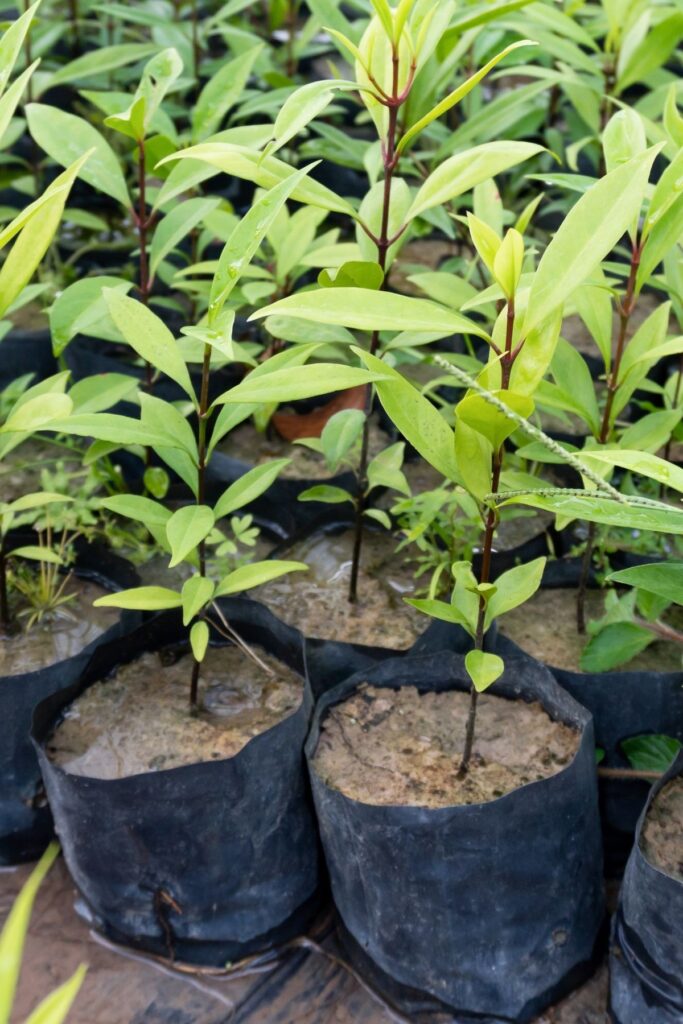
Soil and Growing Medium Essentials
The right soil is essential for a thriving container garden. Here’s what to look for:
- Potting Mix: Choose a lightweight, well-draining mix to ensure proper root growth. Avoid garden soil, which can compact and restrict root development.
- Water Retention: Look for mixes containing coconut coir or water-retaining crystals to maintain moisture levels. Ensure the mix is free of harmful chemicals and provides a balanced environment for plant growth.
Maintaining and Caring for Your Container Garden
Regular care is crucial for keeping your balcony garden healthy. Here are some tips:
- Watering: Check the moisture level regularly. Water thoroughly when the soil feels dry about an inch deep. Self-watering containers can help reduce maintenance, especially during hot months.
- Portability: Choose lightweight materials that allow easy movement, so you can shift plants based on sunlight or weather.
Watering Techniques and Portability
Watering is a crucial aspect of balcony gardening, and tailoring your approach can make a big difference in plant health. On a balcony, containers can dry out quickly, so it’s essential to adapt your watering habits to the unique conditions of your space.
- Timing: Water in the early morning or evening to avoid evaporation during hot, sunny days. Choose a time based on your balcony’s sun exposure.
- Moisture Monitoring: Check the soil’s moisture by feeling an inch or two below the surface. This ensures you’re watering the right amount.
- Self-Watering Containers: If you’re short on time, consider self-watering containers. They provide consistent moisture, reducing the need for frequent attention.
Seasonal Care for Your Balcony Garden
Each season brings its own seasonal maintenance checklist:
- Spring: Focus on planting and fertilizing.
- Summer: Increase watering frequency and provide shade during extreme heat.
- Fall: Clean up and prepare for winter by transitioning to hardy plants.
- Winter: Protect plants from freezing temperatures by bringing them indoors or insulating your containers.
Enhancing Your Balcony Garden Aesthetics
A beautiful balcony garden is all about design. Here’s how to enhance your space:
- Mix Container Materials: Combine different materials like terracotta, plastic, and wood to create visual interest. Choose containers that complement each other and your balcony’s style.
- Vertical Gardening: Use trellises or hanging baskets to maximize vertical space.
- Creative Lighting: Incorporate string lights or lanterns for a cozy, inviting atmosphere.
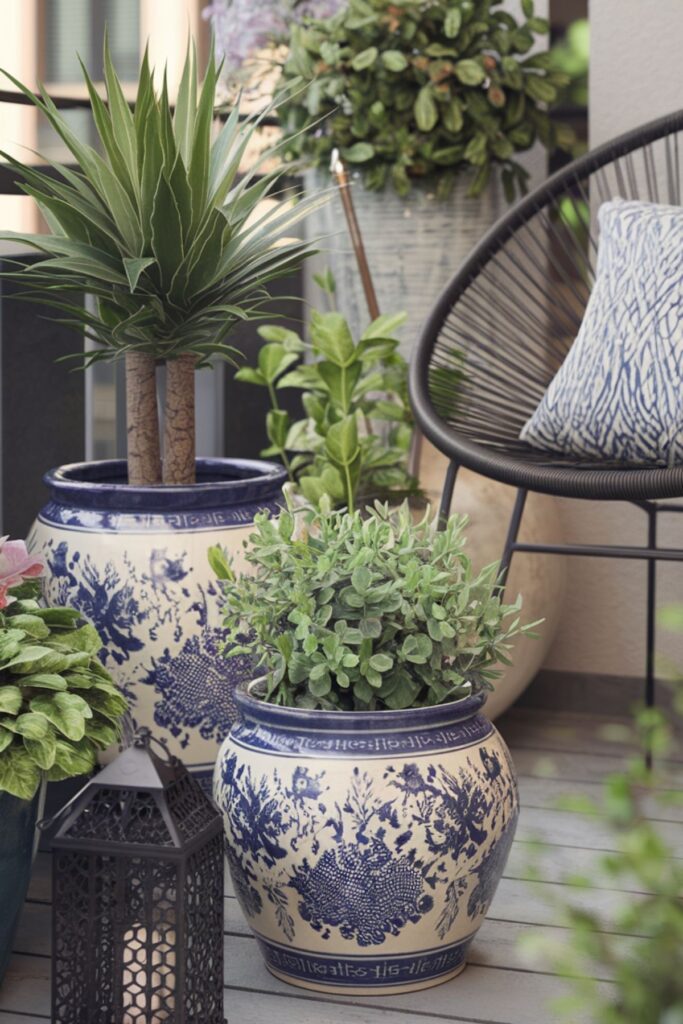
Frequently Asked Questions
You might have questions about making the most of your balcony garden. Here are some common inquiries and their answers to guide you through each challenge.
How can you maximize space with plant arrangements in small balcony gardens?
Use vertical gardening techniques like wall planters or hanging baskets. Arrange plants in tiers to create more levels and use railing planters to utilize extra space. Group plants with similar light and water needs together for convenience.
Which plants are ideal for low maintenance balcony gardening?
Consider hardy plants like succulents, herbs, or ornamental grasses. These plants often require less watering and can thrive in various conditions. They are perfect for busy individuals who still want a vibrant garden.
What features should be considered when selecting containers for balcony gardens?
Choose lightweight materials for easy movement, like plastic or fiberglass. Ensure containers have drainage holes to prevent water buildup. Look for options that can withstand weather changes, such as UV-resistant finishes.
Which gardening solutions are most suitable for apartment balconies?
Window boxes and small raised beds are great options. You can also use modular planters that allow for easy rearrangement. Container gardening fits well in smaller spaces and can brighten up your balcony.
How do you protect balcony garden plants from varying weather conditions?
Use protective coverings like row covers on cooler nights. Move pots to sheltered areas during storms or extreme sun. Consider using mulch to retain moisture and insulate the roots.
What are creative ideas for designing a modern balcony garden?
- Incorporate sleek, minimalist furniture that complements greenery.
- Use geometric planters and integrate lighting for ambiance.
- Vertical gardens with an artful display of plants can add a unique touch to your balcony space.
Key Takeaways
- Select the right containers
- Ensure proper drainage
- Choose the right soil
- Personalize your watering routine to oyour balcony’s conditions
- Use lightweight and breathable materials
With the right tools and thoughtful care, your balcony can become a vibrant, enjoyable retreat all year round. Start planning today, and watch your garden come to life!
Share your success stories or ask for advice in the comments below!

